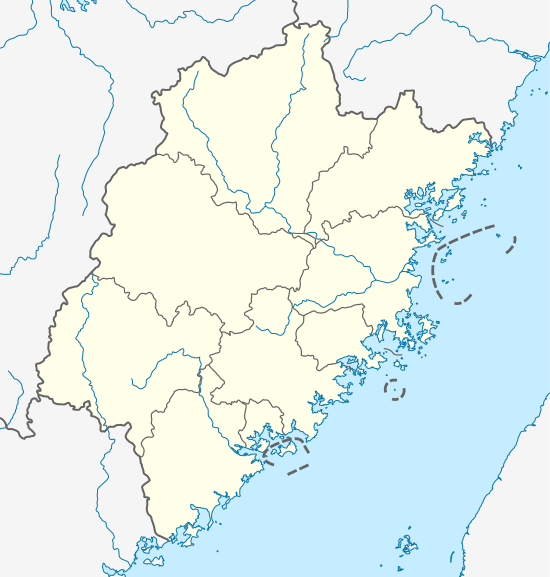Licheng District, Quanzhou
Licheng (simplified Chinese: 鲤城区; traditional Chinese: 鯉城區; pinyin: Lǐchéng Qū; Min Nan: Lí-siâⁿ-khu) is a district of Quanzhou, Fujian province, People's Republic of China.
Licheng 鲤城区 | |
|---|---|
District | |
 Licheng Location in Fujian | |
| Coordinates: 24°53′16″N 118°33′57″E | |
| Country | People's Republic of China |
| Province | Fujian |
| Prefecture-level city | Quanzhou |
| Time zone | UTC+8 (China Standard) |
Geography
Licheng District consists of two parts, separated by the Jin River. On the left, northeastern side of the river, Licheng District includes several square kilometers that encompass most of Quanzhou's historical center; this is surrounded on all sides (other than the river) by Fengze District. On the right, southeastern side, Licheng District includes a much larger area, with both urban and suburban parts.
Architecture
In relation to many other cities in China, Licheng has much of its historic center intact.[1] Lichengs historic center is not the typical Chinese city center, having many European influenced buildings and churches as well. Considering that it is a coastal port city this is unsurprising however.
Cultural Attractions
Most of historical monuments of downtown Quanzhou are within Licheng District.
Administration
[[File:Sunwu Creek Bixi - DSCF8627.JPG|thumb|left|A [[bixi ({{lang|zh-hans|tortoise)|bixi]] turtle with a stele, installed by Licheng District Government in 1998 on the bank of the Sunwu Creek, to mark the completion of a dredging project on the said creek ({{lang|zh-hans|of importance for local flood control).]] The district comprises eight subdistricts:
- Jiangnan (江南街道)
- Fuqiao (浮桥街道)
- Jinlong (金龙街道)
- Changtai (常泰街道)
- Kaiyuan (开元街道)
- Lizhong (鲤中街道)
- Haibin (海滨街道)
- Linjiang (临江街道)
There is also one township-level Garden Zone (园区):
- Jiangnan Gaoxin (江南高新园区)
Notes and references
- old city visible from sky-https://www.google.com/maps/@24.9100859,118.5822258,5844m/data=!3m1!1e3